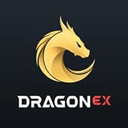
Review on Ethereum by marilys fernandez

ethereum and its innovative smart contracts and dapps
This time I am going to review a project that is located almost from the moment it was launched on the market, as the second most important cryptocurrency after bitcoin. This project is called ethereum, an open source platform that is primarily known for its powers of allowing developers to create decentralized applications and smart contracts. These terms are very common when talking about ethereum and that is why I want to delve a little more into them. Decentralized applications are a kind of computer program that do not need intermediaries to function and are totally open source with very varied use cases such as financial applications, or cryptocurrency wallets that after being launched on the market will always be executed according to what programmed. Smart contracts are also computer programs that are executed between 2 or more parties and enforce a previously planned agreement making transactions completely secure. These 2 are the most important advantages of ethereum in the cryptographic environment, which have made it gain a lot of popularity but ethereum has also been a platform with which many cryptocurrencies have been created using the ERC-20 standard and allowing the exchange of that type of tokens with others on the same network more easily. All projects created on the ethereum blockchain are created through a virtual machine known as EVM. It is very common to refer to ethereum as a cryptocurrency, but the word itself refers to the platform, since the currency that gives life to the entire network and that is used for payments on the network and running decentralized applications is called ether.
Pros
- Ethereum is today the main network preferred by developers for smart contract programs and decentralized applications.
- Ethereum smart contracts are an extremely secure way to allow transactions between 2 or more people and have them executed on schedule
- Through ethereum decentralized applications have been created that have a lot of popularity and acceptance in the market, and even games where it is possible to generate income by collecting certain elements
- Ethereum offers a lot of scalability in the cryptographic environment since it allows hundreds of tokens created under its protocol to be exchanged more easily
- It is a platform that allows all developers to create their own cryptocurrencies
- Ethereum transactions are usually faster than bitcoin transactions and can be confirmed in just 14 seconds, which makes it a more competitive mechanism to serve as a payment system.
Cons
- Currently the fees when making any transaction on the ethereum network is extremely expensive and the platform has a very competitive rival that is the arrival of the binance Smart chain.












